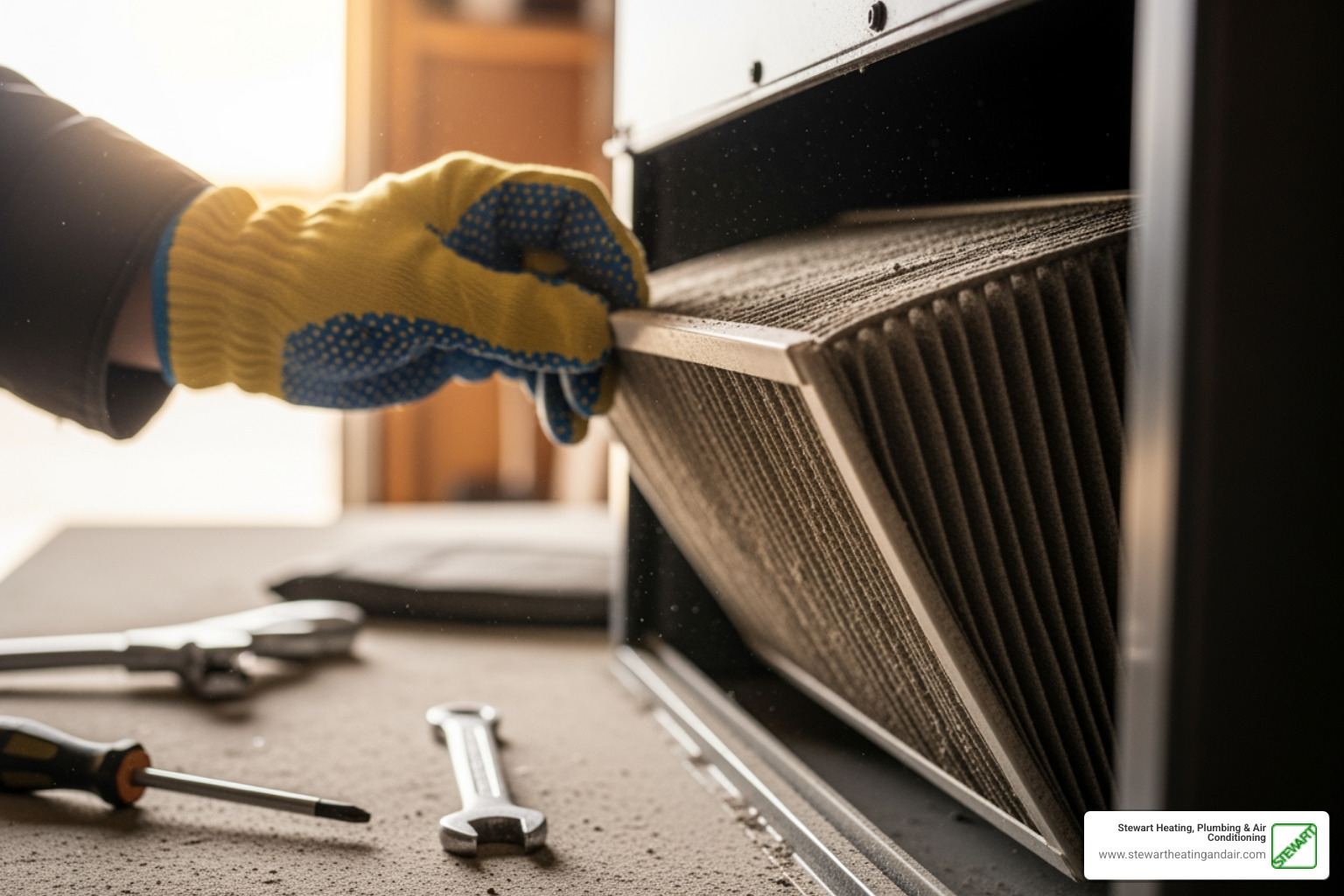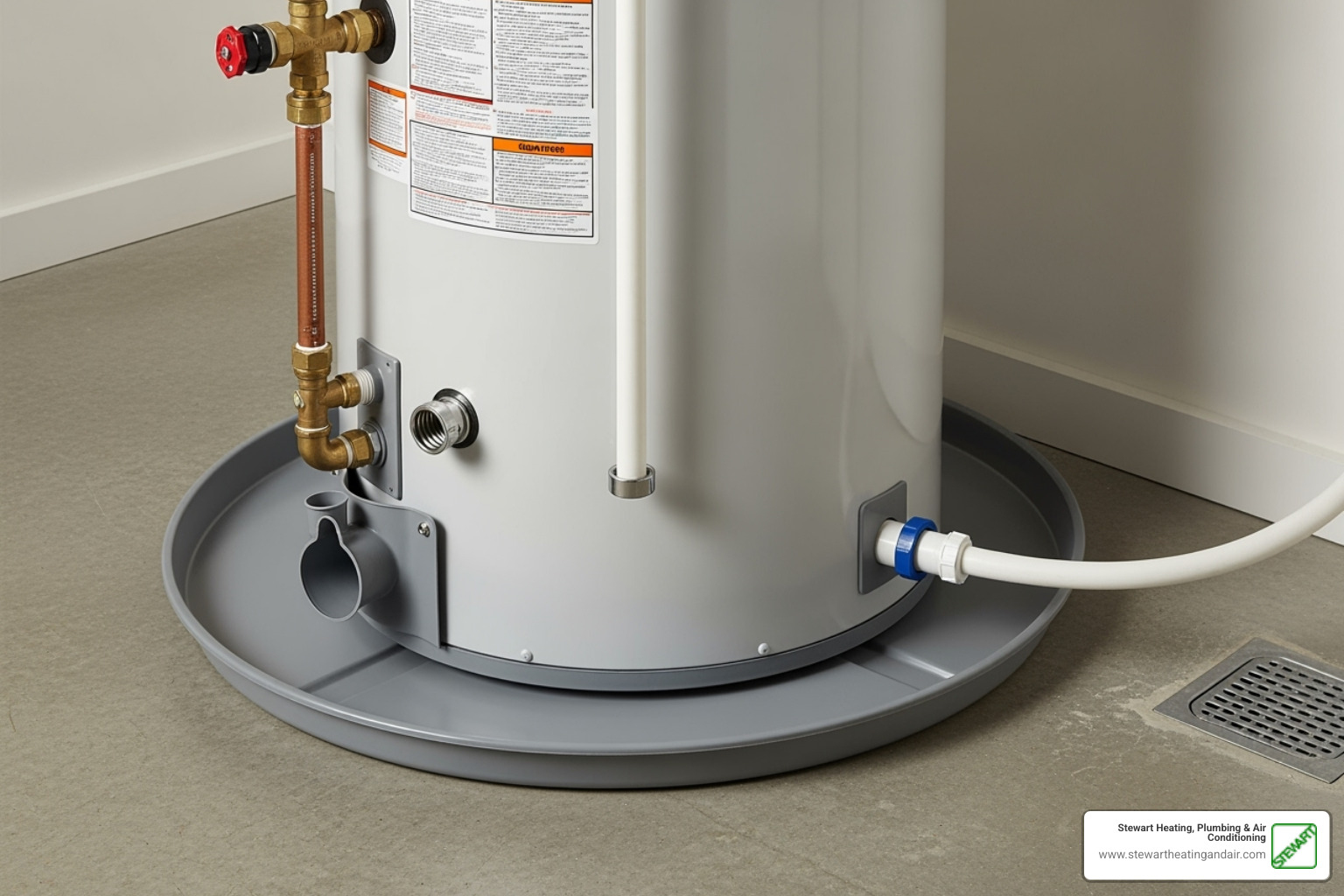
The Unsung Hero Protecting Your Home
A water heater drip pan is a shallow container that sits beneath your water heater to catch leaks and prevent costly water damage to your home. Without this simple device, even a small leak can seep into floors, walls, and foundations - causing thousands of dollars in repairs and creating the perfect conditions for mold growth.
Quick Facts About Water Heater Drip Pans:
- Primary Function: Catch leaks from the water heater tank or T&P relief valve
- Water Damage Prevention: Protect floors, subfloors, walls, and ceilings below
- Code Requirements: Mandatory in many areas when water heaters are above living spaces
- Materials: Available in plastic (for electric heaters) or metal (required for gas heaters)
- Standard Size: Should be at least 2 inches wider than your water heater diameter
Think of it this way - operating a water heater without a drip pan is like driving without insurance. As one expert puts it: "An unnoticed water drip from a leaky water heater gradually seeps into floorboards and finds its way into the home's foundation, causing extensive damage, warping wood, or eroding drywall."
The good news? A water heater drip pan is one of the most cost-effective ways to protect your property investment. This simple device acts as your first line of defense against water damage, giving you time to address problems before they become expensive disasters.
Whether you're installing a new water heater or adding protection to an existing unit, understanding how drip pans work - and why they're essential - can save you from headaches and huge repair bills down the road.
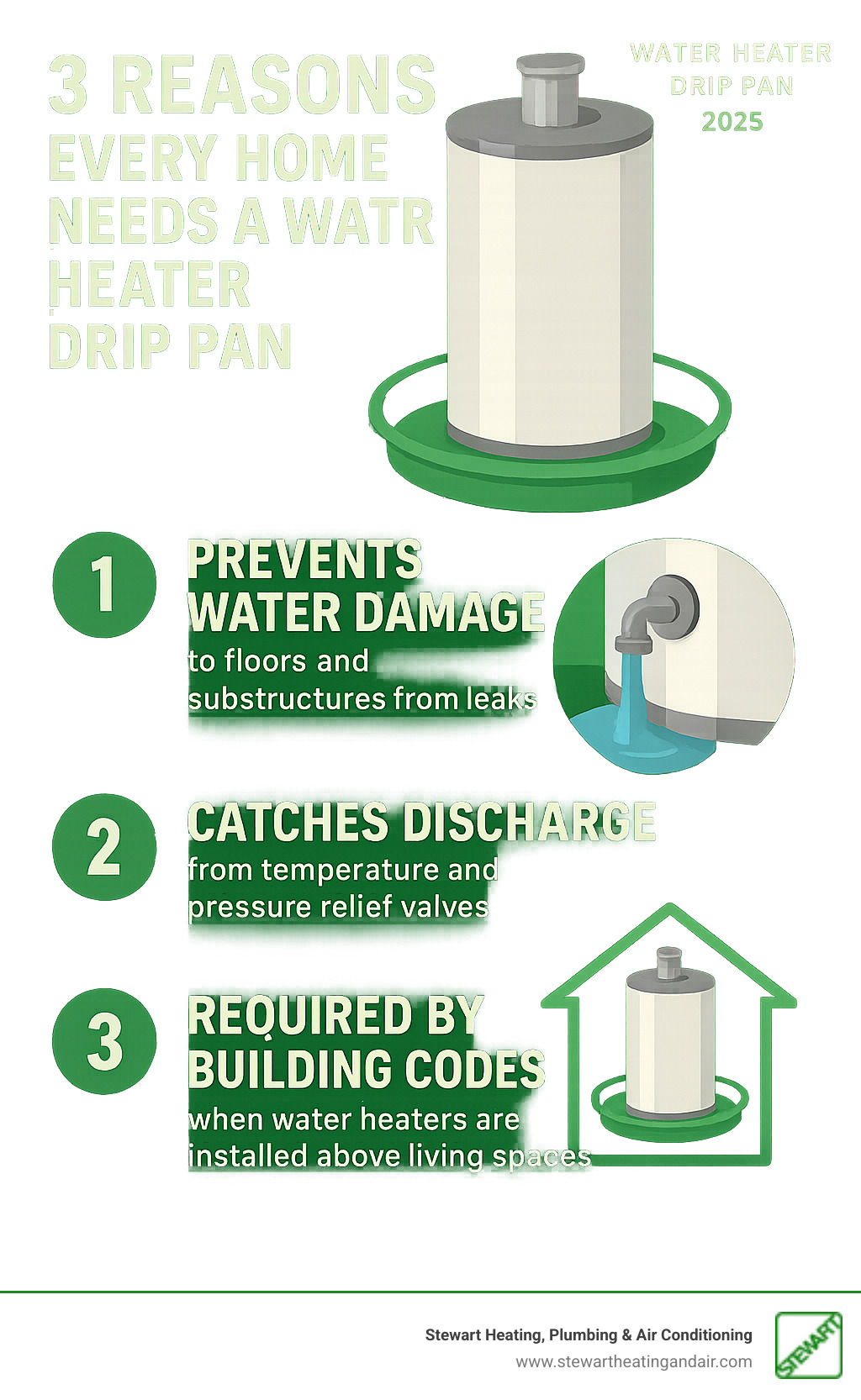
Choosing the Right Water Heater Drip Pan for Your Home
Shopping for a water heater drip pan might not be the most exciting item on your home improvement list, but getting it right is absolutely crucial. Think of it like buying the right size umbrella - too small, and you're still going to get soaked when it matters most.
The good news? Once you understand a few key factors, choosing the perfect pan becomes straightforward. You'll need to consider the material that works best for your specific water heater, get the sizing just right, and make sure everything meets your local building codes.
Metal vs. Plastic: Which Pan is Best?
Here's where things get interesting - not all water heater drip pans are created equal. The material you choose can make or break your protection strategy, and surprisingly, your water heater type actually dictates which option you can safely use.
Metal pans made from aluminum or galvanized steel are the heavy-duty champions of the drip pan world. They're incredibly durable and can handle whatever your water heater throws at them - literally. Aluminum pans resist corrosion beautifully, while galvanized steel options are tough as nails but may develop rust over time.
Here's the crucial part: if you have a gas water heater, you must use a metal pan. No exceptions. Gas units can reach higher temperatures, and the proximity to flames means plastic simply isn't safe. Metal pans can easily handle temperatures exceeding 180°F without breaking a sweat.
Plastic pans made from PVC or ABS materials have their own advantages. They're lightweight, making installation a breeze, and they'll never rust - a major plus in humid environments. They're also easier on your wallet upfront. However, plastic pans are only suitable for electric water heaters. They typically max out around 180°F, which is fine for electric units but not safe for gas applications.
The installation factor is worth considering too. Metal pans are heavier and more rigid, which can make maneuvering them into tight spaces a bit challenging. Plastic pans are much lighter and more flexible, making them friendlier for DIY installations.
Cost-wise, plastic pans generally offer more bang for your buck initially, while metal pans represent a longer-term investment. Some premium plastic pans even come with "unbreakable" warranties, offering impressive durability that rivals their metal counterparts.
Sizing and Code Requirements
Getting the size wrong on your water heater drip pan is like buying shoes that are too small - technically they might fit, but they won't do their job when you need them most.
Start by measuring your water heater's diameter at its widest point. Then apply the golden rule: your pan should be at least 2 inches wider than your water heater. So if your tank measures 22 inches across, you'll need a pan that's at least 24 inches wide. This extra space isn't just helpful - it's essential for catching those sneaky drips that might otherwise miss the pan entirely.
Pan depth matters too. Most standard pans are about 2.5 inches deep, though some plastic options go up to 3 inches. This depth should accommodate roughly three to four gallons of water - enough to give you time to notice a problem before it becomes a flood.
Don't forget about your Temperature and Pressure (T&P) relief valve. This safety device occasionally releases water, and you want that discharge landing squarely in your pan, not on your floor.
Building codes are where things get serious. In many areas, including right here in Contra Costa County, a water heater drip pan isn't just recommended - it's required by law. The International Residential Code typically mandates pans when water heaters are installed above living spaces. Whether your unit is in an upstairs closet, attic, or anywhere above finished areas, you'll likely need a pan to pass inspection.
Local codes can vary between Pittsburg, Walnut Creek, Antioch, and other areas we serve, so it's always smart to check with your municipality. At Stewart Heating, Plumbing & Air Conditioning, we make sure every installation meets all local requirements - because doing it right the first time is always better than dealing with code violations later.
The bottom line? Choose metal for gas units, plastic for electric, size it generously, and always check your local codes. Get these basics right, and your water heater drip pan will protect your home for years to come.
A Guide to Water Heater Pan Installation
Once you've chosen the perfect water heater drip pan, the next step is getting it properly installed. While it might look like a simple task, there's more to it than just sliding a pan under your water heater. Trust us - we've seen what happens when installations go wrong, and it's not pretty.

DIY vs. Professional Installation
Here's the honest truth: installing a water heater drip pan under an existing water heater is no joke. You're dealing with a tank that can weigh anywhere from 100 to 300 pounds, plus all the water inside it. Add in the plumbing connections, gas lines (for gas units), and electrical connections, and you've got a project that can quickly turn from "weekend warrior" to "call the professionals."
If you're replacing your water heater anyway, that's the perfect time to add a drip pan - everything's already disconnected and ready to go. But retrofitting a pan under an existing unit? That's when we usually recommend giving us a call.
Step-by-Step Guide to Installing a Water Heater Drip Pan
Before we dive into the steps, let's talk safety. Water heaters don't mess around, and neither should you. Always shut off the water supply at the cold water inlet valve on top of your unit. Turn off the power (flip that circuit breaker) or shut off the gas (turn that valve to "OFF"). If you're lifting the water heater, you'll need to drain it completely - and trust us, have a friend help you. These things are heavy even when empty.
Positioning the pan is your first real step. The water heater drip pan needs to sit perfectly centered under your unit with enough clearance around the edges for drain fittings. Think of it like parking a car - you want it right in the middle of the space.
Next comes creating a drain hole if your pan doesn't have one pre-drilled. Most quality pans come ready to go, but if yours doesn't, you'll need a hole saw to cut a clean 1 to 1.5-inch opening. No kitchen knives or makeshift tools here - a proper hole saw gives you the clean cut you need for a good seal.
Installing the drain fitting requires some finesse. Whether you're using PVC or CPVC fittings, generous amounts of plumber's sealant or thread tape are your best friends. A loose fitting here defeats the whole purpose of having the pan in the first place.
The drain line connection is where things get interesting. You're essentially creating a pathway for water to escape safely. This isn't just about connecting pipe A to fitting B - you need to think about where that water is going and how it's getting there.
Running the pipe to a floor drain or sump pump requires some planning. The pipe needs a continuous downward slope (gravity is doing the work here), and you can't have any low spots where water might sit and stagnate. Whether you're heading to a floor drain, utility sink, or sump pump, that water needs a clear, unobstructed path out of your home.
Finally, sealing connections is your last chance to get everything right. We always tell our customers - if you see even the tiniest drip from a connection, fix it now. A small leak in your drain system is like having a hole in your umbrella - it might work for a while, but eventually, you're going to get wet.
Once everything is connected and sealed, you can restore power and water to your heater. Your new water heater drip pan is now standing guard, ready to catch any problems before they become disasters. And honestly? That peace of mind is worth its weight in gold.
Troubleshooting: What to Do When You Find Water in Your Pan
Finding water in your water heater drip pan might make your heart skip a beat, but take a deep breath - this is actually your pan doing exactly what it's supposed to do! It's catching a leak before it can wreak havoc on your floors, walls, or foundation. The important thing now is to act quickly and methodically.
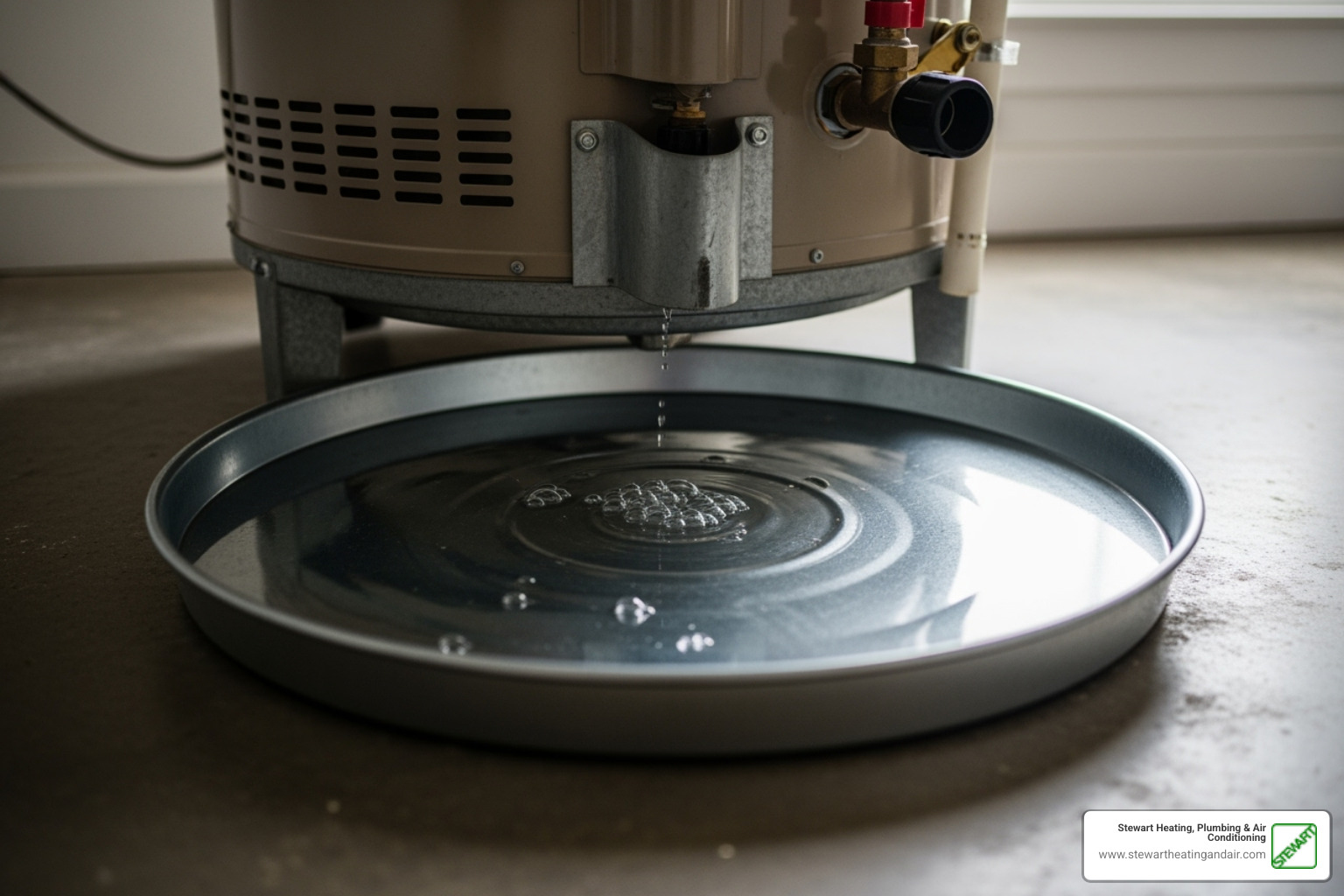
Never ignore water in your pan! That water is like your water heater waving a red flag, trying to tell you something's wrong. Ignoring it is like ignoring that strange noise your car makes - it might seem fine now, but it's probably going to get worse (and more expensive) if you don't address it.
Here's what to do immediately:
Start with safety first by shutting off the water supply. Look for the cold water shut-off valve on the pipe that goes into the top of your water heater and turn it clockwise until it stops. If this valve is stubborn or doesn't completely stop the water flow, you might need to turn off your home's main water supply as a temporary measure.
Next, turn off the power or gas supply. For electric water heaters, head to your electrical panel and flip the circuit breaker labeled for your water heater to "OFF." If you have a gas water heater, find the gas supply valve on the gas line leading to your unit and turn it to "OFF." This prevents the system from trying to heat water when there might not be enough in the tank, which could be dangerous.
Once you've secured the water and energy supply, you can safely start playing detective to figure out where that water is coming from.
What Does Water in Your Water Heater Drip Pan Mean?
Water in your water heater drip pan doesn't automatically mean your water heater is ready for the scrap heap. Think of it more like a symptom - it could indicate anything from a minor hiccup to a more serious issue that needs professional attention.

Temperature and Pressure (T&P) relief valve discharge is one of the most common culprits. This valve is like a safety net for your water heater - it opens when things get too hot or too pressurized inside the tank. If water is coming from the T&P valve's discharge pipe, it might mean your home's water pressure is too high, your water heater's thermostat is set too high, or the valve itself is getting old and cranky. Sometimes the valve is doing its job perfectly, but there's an underlying issue causing the pressure or temperature to spike.
Leaking drain valves are another frequent suspect. That little valve at the bottom of your water heater (the one used for flushing out sediment) can start dripping over time. Sometimes it's just a loose connection that needs a gentle tightening with a wrench. Other times, the valve itself has worn out and needs replacement - kind of like how a faucet washer eventually gives up the ghost.
Loose plumbing connections at the top of your water heater are actually pretty common and often easy to fix. The constant heating and cooling cycles can cause these connections to work themselves loose over time. It's like how a jar lid can loosen up after being opened and closed repeatedly. A simple tightening with a wrench often does the trick.
Tank corrosion or failure is the scenario nobody wants to hear about, but it's important to recognize the signs. If the water in your pan looks rusty or discolored, that's your tank telling you its protective lining has failed and it's starting to rust from the inside out. Water heaters typically last 8 to 12 years, and when internal corrosion creates pinhole leaks in the tank itself, replacement is usually the only solution. The anode rod inside your tank works like a sacrificial lamb, corroding so your tank doesn't have to - but when it's completely depleted, your tank becomes vulnerable.
Condensation issues can also cause water to collect in your pan, especially with high-efficiency gas water heaters. This isn't technically a leak from the tank, but rather moisture from the venting system that's dripping down. While it might seem harmless, this usually indicates a problem with the venting system that should be addressed by a professional.
Your water heater drip pan is an excellent early warning system, but it's not a permanent solution to the underlying problem. Once you've identified where the water is coming from, it's time to address the root cause. While you might be able to tighten a loose connection yourself, most other issues are best handled by experienced professionals who can ensure the repair is done safely and correctly the first time.
Frequently Asked Questions about Water Heater Pans
Over the years, we've answered countless questions about water heater drip pans from homeowners across Contra Costa County. Whether you're in Pittsburg, Walnut Creek, or Antioch, the concerns are usually the same. Let's tackle the most common ones we hear.
How long does a water heater drip pan last?
Here's some good news - a quality water heater drip pan is built to last, often outliving the water heater it's protecting!
Plastic pans made from thick, UV-protected polyethylene are surprisingly durable. Many come with warranties of 10 years or more against breaks and cracks. However, we've seen cheaper plastic pans become brittle over time, especially when they're exposed to temperature swings or sunlight. The key is investing in a quality pan from the start.
Metal pans are the marathon runners of the drip pan world. Aluminum pans resist corrosion beautifully and can last for decades - we've seen them outlast multiple water heaters! Galvanized steel pans are also tough, though they can eventually rust if they're constantly sitting in water.
You'll know it's time to replace your pan when you spot cracks or holes in plastic pans, significant rust eating away at metal pans, or brittleness and discoloration in older plastic units. The good news? Most homeowners never need to think about replacing their pan - it's truly a "set it and forget it" component.
Can I install a drip pan under an existing water heater?
This is one of those "technically possible but practically challenging" situations. Yes, you can retrofit a water heater drip pan under an existing unit, but it's not a simple weekend project.
The biggest hurdle is lifting the water heater itself. Even a drained 40-gallon unit weighs a considerable amount, and you'll need to disconnect water lines, gas connections (if applicable), and potentially the exhaust vent. Then everything needs to be reconnected perfectly - no room for error when it comes to gas lines or water connections.
We've seen well-meaning homeowners attempt this and end up with bigger problems than they started with. Professional assistance is strongly recommended for this type of retrofit. Our team has the proper equipment to safely lift your water heater and the expertise to ensure all connections are secure when we're done.
If your water heater is in a tight space or on an upper floor, the complexity increases significantly. Sometimes the smartest move is waiting until it's time to replace the water heater and installing the pan then - much simpler and safer for everyone involved.
Does a tankless water heater need a drip pan?
This surprises many homeowners, but the answer is often yes! While tankless units don't have a big tank that can suddenly burst, they're not immune to leaks.
Tankless units can develop leaks from internal components, pipe connections, or their pressure relief valves. It might not be the dramatic flood you'd get from a tank failure, but a slow, steady leak can still cause serious water damage - especially if it goes unnoticed for weeks or months.
Most tankless manufacturers actually recommend using a drip pan, particularly when the unit is installed inside your home or above finished spaces. It's their way of saying "better safe than sorry."
Local building codes in our service area often require drip pans for tankless units too, especially when they're mounted above living spaces. The logic is simple - any water heater, tank or tankless, has the potential to leak, and your home deserves protection.
Think of it this way: the water heater drip pan for a tankless unit is like wearing a seatbelt. You hope you'll never need it, but you'll be grateful it's there if something goes wrong. It's a small investment that can save you from major headaches down the road.
Conclusion: Your First Line of Defense Against Water Damage
Think about it this way: for less than the cost of a nice dinner out, a water heater drip pan can save you thousands of dollars in water damage repairs. It's one of those rare home improvements that's both incredibly affordable and potentially life-changing for your wallet.
Throughout this guide, we've finded that this humble piece of equipment does so much more than just sit under your water heater looking pretty. It's your silent guardian, catching everything from minor drips to major leaks before they can wreak havoc on your floors, walls, and foundation. When you consider that a single water heater failure can cause tens of thousands in damage, that little pan starts looking like the smartest investment you'll ever make.
The key takeaways? Choose the right material for your water heater type (metal for gas, either for electric), size it properly with that crucial 2-inch buffer, and make sure it's installed correctly with a proper drain line. When water shows up in the pan, don't ignore it - it's your early warning system telling you to take action before things get expensive.
At Stewart Heating, Plumbing & Air Conditioning, we've seen what happens when homes don't have this protection. We've also seen the relief on homeowners' faces when their water heater drip pan catches a leak and prevents a disaster. Our team serves families throughout Contra Costa County, from Pittsburg to Walnut Creek, and we always make sure your pan is properly installed and connected - because doing it right the first time is what we're all about.
Whether you're installing a new water heater, adding protection to an existing unit, or just want peace of mind knowing your home is protected, we're here to help. Don't wait until you're dealing with soggy carpets and warped floors to wish you'd installed a drip pan.

